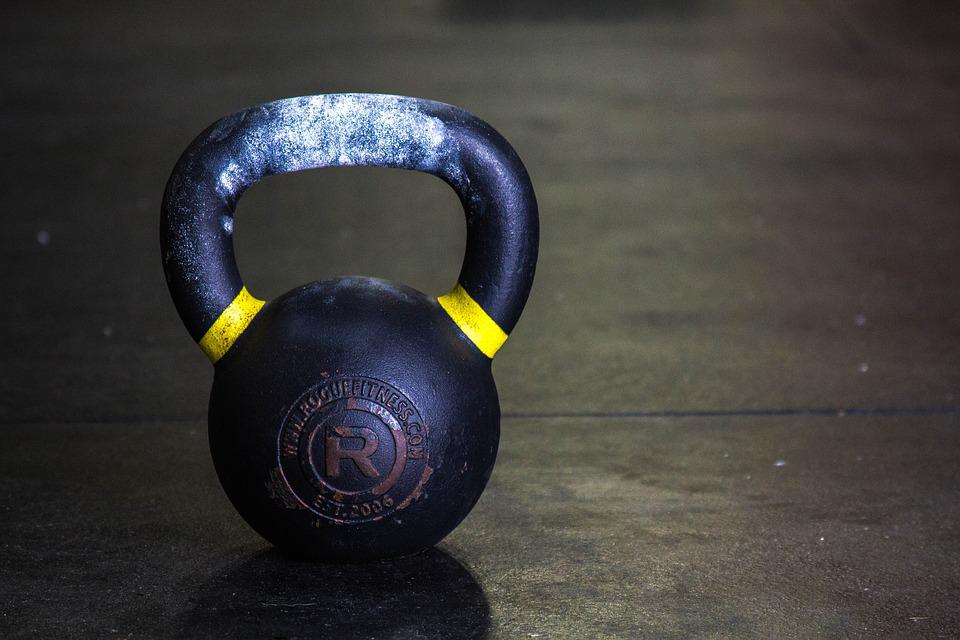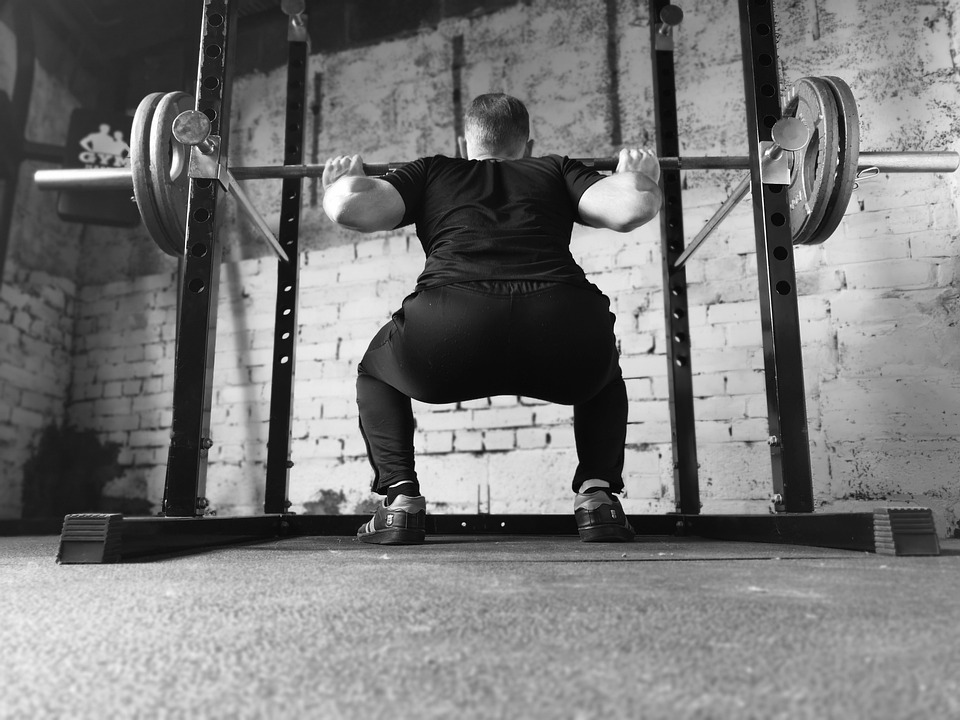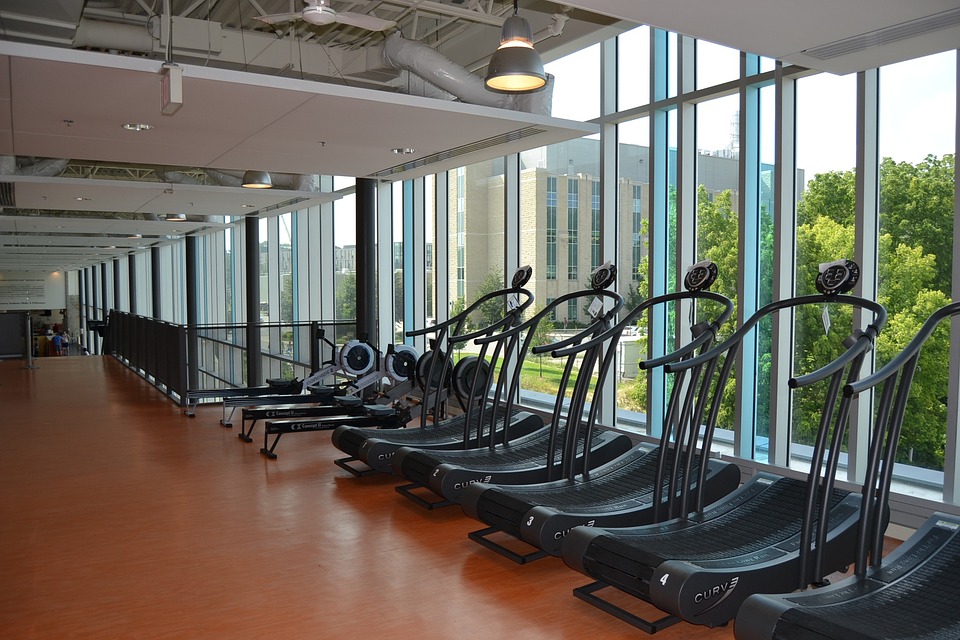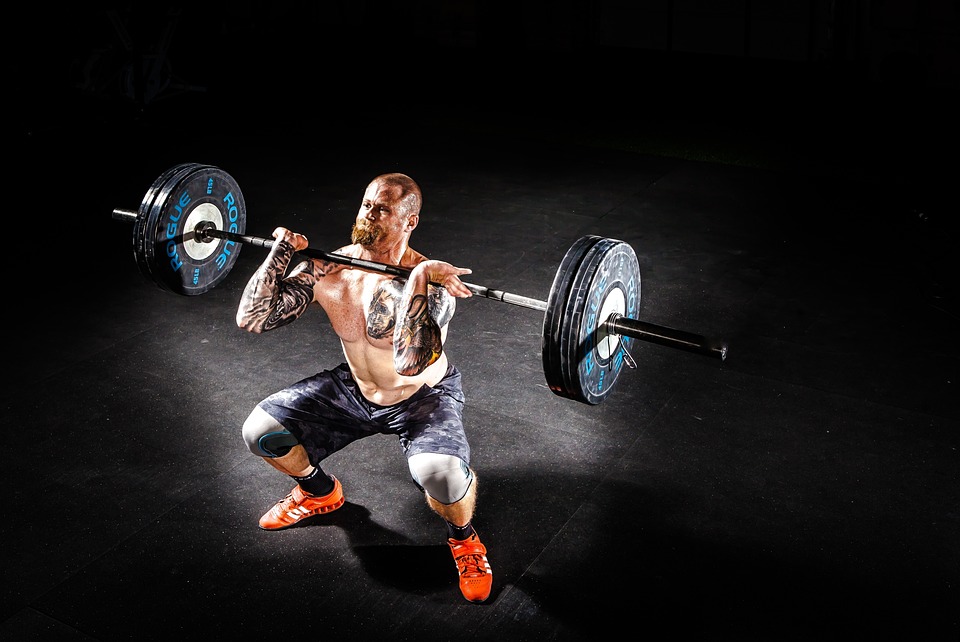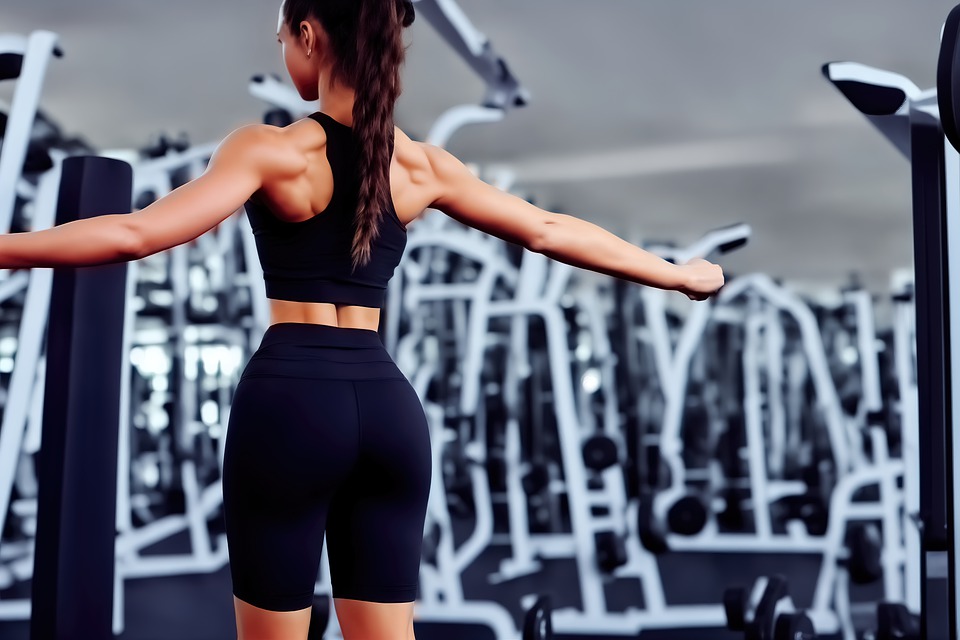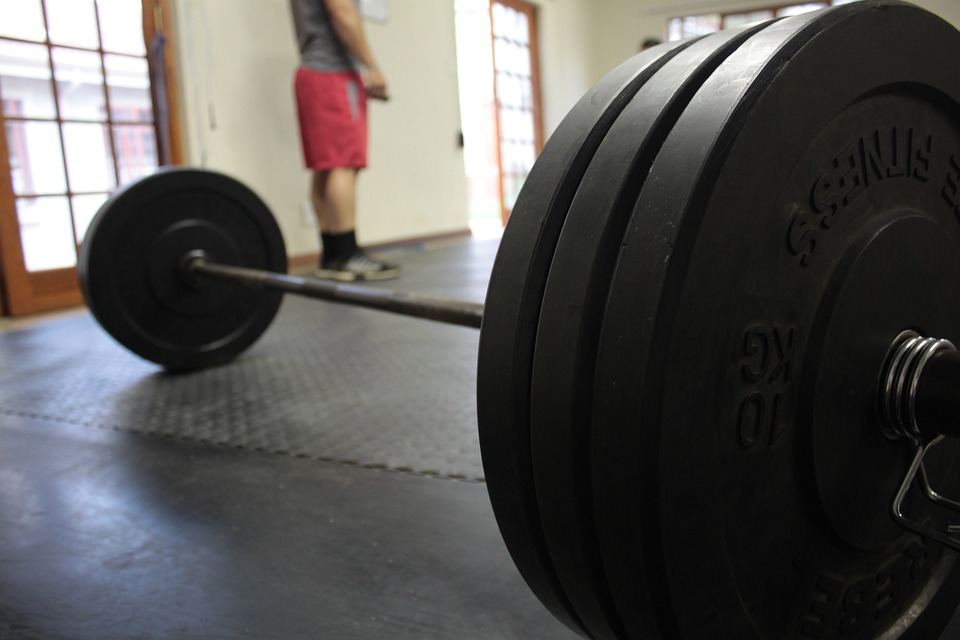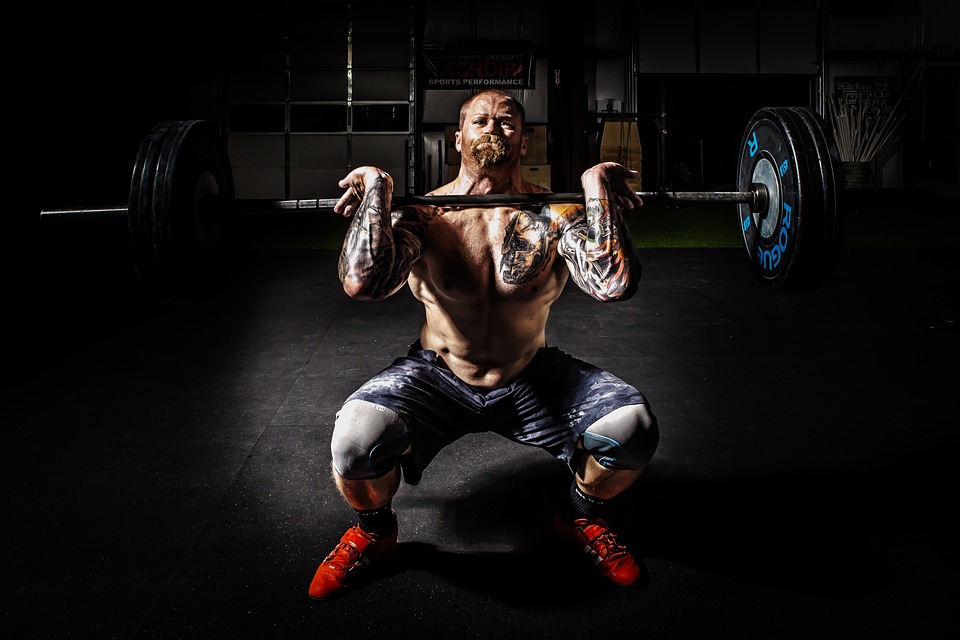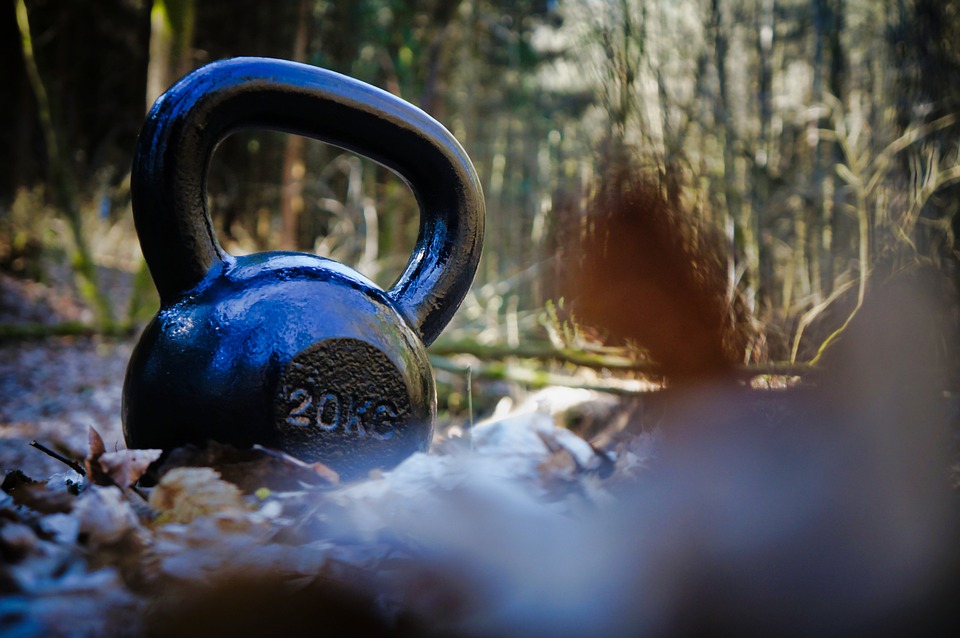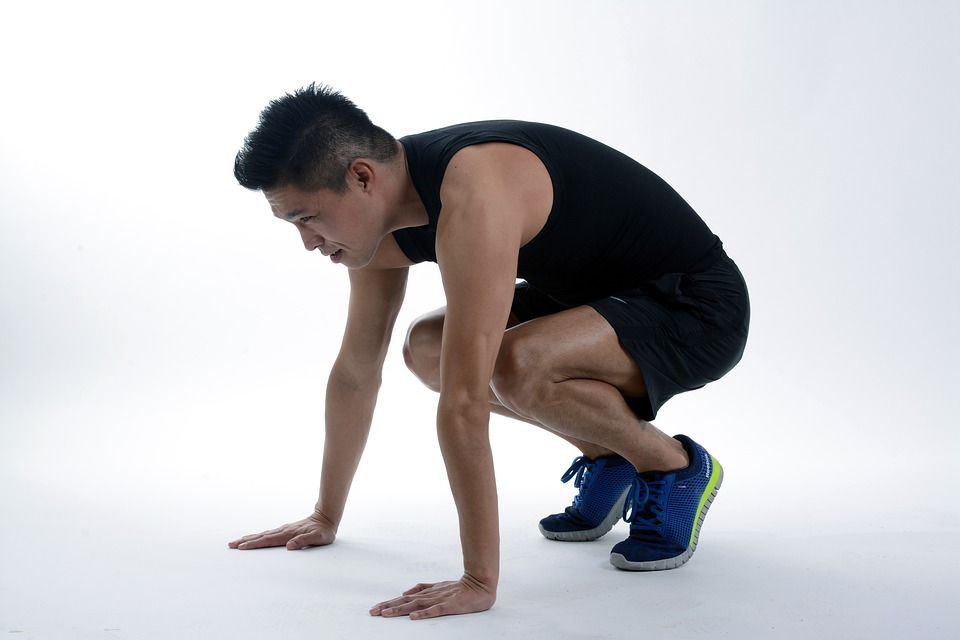
Back Squat and Front Squat Differences
Muscle Recruitment
When back squatting, lifters need to lean forward significantly. The forward lean in this position recruits more of the back muscles – the glutes, hamstrings, and lower back – to keep the upper body stable. The back squat engages the lower back more than any other movement.
Back problems can limit how much strength a person can build.
The front squat recruits the muscles in the front of the body, including the abdominals, hips, and quadriceps, more than the other squat variation. The barbell is supported across the front of the shoulders, which reduces the load on the body and keeps it closer to the center of gravity without causing any drastic forward leaning.
The taller posture created by an upright torso position reduces lower back involvement while also increasing abdominal activation. The bar position for a front squat requires more mobility in the wrists and elbows to keep it in place, while a back squat generally requires more mobility in the shoulders to stay gripping the bar firmly.
The interesting thing is that the amount of muscles used in the lower body is more closely related to how deep you squat, rather than where the bar is positioned. Moving deeper into a squat will target more hamstring and glute muscles.
When you squat, focus the stress on your quadriceps by keeping your thighs parallel to the ground or higher. One of the quadriceps muscle heads is more active during a front squat than during a regular squat, but not the entire muscle.
The position of the torso in a front squat may allow a person to achieve a deeper squat with less effort, but many people are able to reach a similar depth with a back squat.
Joint Strain
The back squat is often considered to be more stressful to joint structures in both the upper and lower body than other types of squatting.
The load being carried across the upper back can put a lot of strain on the lower back and hips, especially if the person isn’t leaning forward enough.
The barbell across the back during a lifting exercise may put stress on the shoulder joint, particularly for people who have a tight chest or shoulder muscles, or who have preexisting shoulder problems.
There are certain changes you can make to your foot placement, stance width, hand position, and squat depth to reduce stress on your joints. The back squat has the potential to be more damaging to the joints than the front squat.
Although the front squat can be tough on your wrists, it is good exercise for your overall health. This is because the bar is held in the “rack” position, with your palms facing the ceiling and your fingers near your shoulders.
There are some adjustments that can be made if someone has poor wrist mobility. Lifters can improve their grip by adjusting their grip, using a crossed-arm position, or attaching long lifting straps to the bar. Although the basic front squat movement and rack position does not usually strain the wrist joint, it is still possible for it to happen. The back squat is better for your wrists because it is more stable and less stressful.
Back Squat and Front Squat Similarities
There are several benefits that these two different types of squats share even though there are many physical and performance differences between the two.
Movement Pattern
The only difference between a bodyweight front squat and a back squat is that, in a back squat, the weight is evenly distributed between your front and back. A squat is an exercise where you lower your body down into a sitting position and then back up again. The weight you are using is held in either your front or your back, depending on the variation you are doing.
It’s what turn of the century lifters used to call the “deep knee bend” — squatting down by bending your legs to a deep position. Whether you’re performing a back squat, front squat, goblet squat, or overhead squat, you’re still squatting.
The front and back squats both use the quadriceps, hamstrings, and glutes to actively move the weight. The abs and lower back muscles are used to help keep the upper body stable and strong. The muscles in the upper back, shoulders, and latissimus dorsi provide stability for the torso.
The squat can be performed with a wide or narrow stance, depending on the lifter’s goal and how their limbs work. The two types of squats can be performed to different depths and ranges of motion, which will slightly change the muscles being used in the lower body.
Technique Differences Explained
While simply changing the position of the barbell from the front to the back may not sound like a significant change, it initiates a series of differences that will affect the technical performance of the lift and, ultimately, the overall results.
Bar Position
The back squat is a weightlifting exercise in which the barbell is supported on the upper back and shoulders. The bar is prevented from sliding down the lifter’s back by gripping the bar on either side with the hands and slightly tilting the torso forward. This tension activates the large back muscles, abdominals, and lower back for stability.
The bar is supported across the front deltoids in a front squat, typically placed close to the collarbones or neck. To do the rack position, you need to bend your arms and hold the bar in place with your hands or fingers.
In this position, the weight is supported by the shoulders, biceps, and forearms. The barbell is kept close to the body by working the upper back isometrically, and the abdominals are significantly activated to keep the weight from compressing the spine.
Body Posture
To maintain balance while squatting with a barbell, you must arch your back and tilt your torso forward. This position puts your lower back muscles in a more active role as stabilizers. Unless they have high levels of hip mobility, some lifters may find it difficult to get into a deep squatting position.
The front squat allows you to sink into a deeper squat position more easily, causing less strain on your hips, knees, and low back.
The rack position requires significant upper back strength, and the lifter must resist the weight pulling their upper back into a rounded position. The back squat will typically see lifters falling into a rounded lower back position.
How To Perform The Front Squat
Step 1. Hold the bar with your hands shoulder-width apart, and position it so that the bar is over the tips of your fingers (palms face up). Elbows should be pointing forward in order to maintain balance on the bar.
An alternative method is to hold the barbell in front of your shoulders with your arms crossed (left arm in front of right shoulder, right arm in front of left, as shown in the image below). You need to be reasonably flexible in your shoulders and wrists to do a classic front squat with the bar on your emails. If you don’t have the cross-arm version, it may be better for you at the moment.
Step 2. Remove the bar from the rack and take a step backward, so that your feet are placed Hip-width and shoulder-width apart. Turn your toes out slightly. try to imagine that your feet are screwing into the floor as if you were standing on grass and wanted to twist it up.
Step 3. Pull your ribs down and take a deep breath into your belly and brace your core. Your head, spine, and pelvis should be in one straight line. Your pelvis should also be level with your spine, not tilted down toward the floor. Keep your eyes focused on a point straight in front of you.
Step 4. To squat correctly, lower your body as far down as you can while keeping your back straight and your chest up. Elbows should be pointing forward, and if they start to drop, raise them back up. The ideal situation is when the top of your thighs is below the crease of your hips when you descend.
Your knees must stay in line with your toes. Pushing your feet out and actively rooting into the ground will almost certainly prevent this.
Step 5. Bring your hips and knees back to standing, pushing through the middle of your feet and squeezing your glutes.
Because the barbell is positioned across the front of your shoulders rather than your back, the front squat is less stable than the back squat. This means you won’t be able to lift as much weight. Be sure to adjust your squatting technique if you are accustomed to doing back squats.
How To Perform the Back Squat
Step 1. Set up in a squat rack and grasp the bar with your hands as far apart as is comfortable. Stand under the rack and push your shoulder blades together, making yourself small enough so the bar can rest on your upper back.
A “high-bar” squat is when the bar is positioned high up on the trapezius muscle, just below the neck. When performing a low-bar squat, the bar should be resting lower on your back, balanced across the rear delts. The former refers to the position of your torso, which is more advantageous for staying upright and hitting your quads. The former will let you lift heavier weights, but you’ll have to lean forward more on the descent. Either technique is OK. See which you feel more comfortable with.
Step 2. Space your feet hip to shoulder-width apart with your toes slightly turned outward. Try to twist your legs into the floor as if you were standing on grass and wanted to screw it up. You should feel your glutes tighten and the arches in your feet rise.
Step 3. To prepare for the movement, pull your ribs down so your breathing comes from your belly. Take a deep breath in and brace your core muscles so your spine is stable. Your head, spine, and pelvis should all be in alignment with each other. Your pelvis should be level with your spine, and not tilted toward the floor. Focus your eyes on a single point in front of you.
Step 4. Keeping your hips back, continue to push your feet down. As you lower your body, allow your knees to bend and push them out. Get into a low position while maintaining good form. If you’re doing it right, you’ll be able to lower yourself until the crease in your hips is below the top of your thighs.
Your knees must stay in line with your toes. Pushing your feet out and actively rooting yourself in the ground is the best way to avoid this.
Step 5. Return to standing by extending your hips and knees, pushing through the middle of your feet, and squeezing your glutes.
Front Squat Benefits
If you want to develop your quads, adding front squats to your workout routine is a good choice. Some bodybuilders do front squats as part of their leg workout routine because they are good exercises for developing the muscles in the legs. If you’re interested in training for Olympic weightlifting, the front squat is a key movement in the clean and jerk. Training with front squats will give you the strength and technique you need to be successful in weightlifting.
One potential benefit of front squatting over back squatting is that it is safer for the lower back due to the vertical torso position. When people squat, it is common for them to have difficulty maintaining a neutral lumbar spine, according to Saladino. If people lean their torsos too far forward or let their hips rise faster than their shoulders when coming up out of the bottom of the squat, it puts the muscles and discs in the lower back at risk for strain. In the front squat, your spine is aligned, and your torso moves straight up and down, which prevents shear forces that could lead to injury.
The study found that front squats allow greater knee and hip flexibility, which could lead to a greater range of motion and muscle recruitment. One study found that front squats allow for greater knee and hip flexibility, leading to a greater range of motion and muscle recruitment. The researchers found that the back squat places significantly more compressive force on the lumbar spine, and thus concluded that front squats may be the better choice for lifters with knee problems, such as meniscus tears, as well as for long-term joint health.
Back Squat Benefits
There are many reasons why the back squat is often referred to as the “king of all exercises.” If you are interested in increasing your strength or powerlifting, back squatting is essential. The back squat is more comfortable and easier to balance than the front squat, so you will be able to lift more weight. Most coaches argue that, though the science isn’t clear, the back squat recruits more overall musculature than the front squat, drawing heavily on everything from your shoulders and back to your glutes, hamstrings, and calves, in addition to the quads and core.
The back squat is the best way to gain strength quickly, but there is a greater risk of a lower-back injury. Many trainers believe that the back squat is not the best exercise for people who just want to have strong and healthy legs. These trainers advocate front-loaded squat variations instead, such as front squats, landmine squats, and goblet squats. Unless you are an athlete who competes in the sport of powerlifting or is tested on back squat strength, you don’t have to do it.

